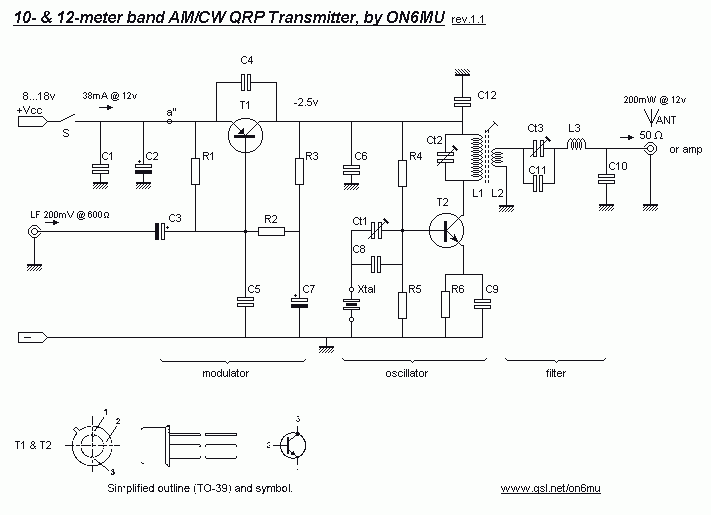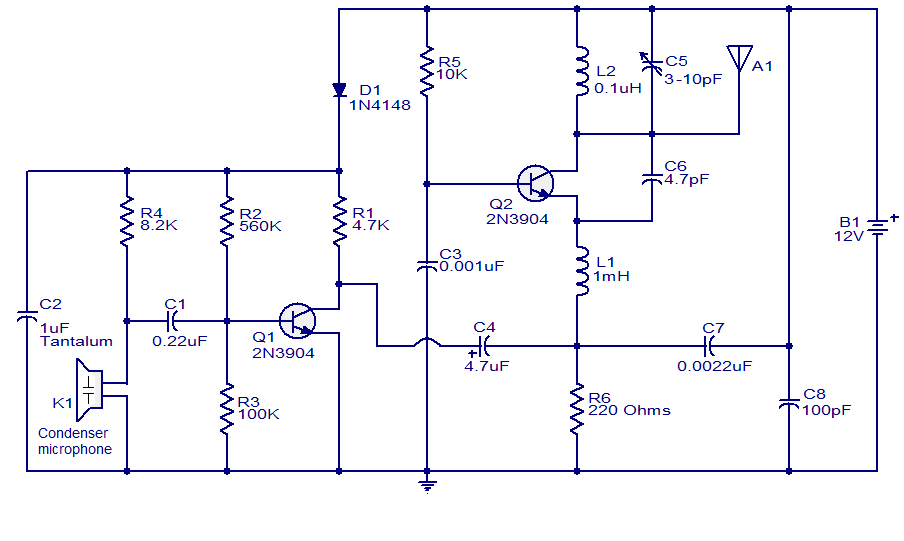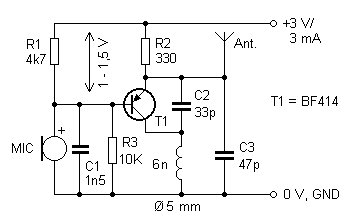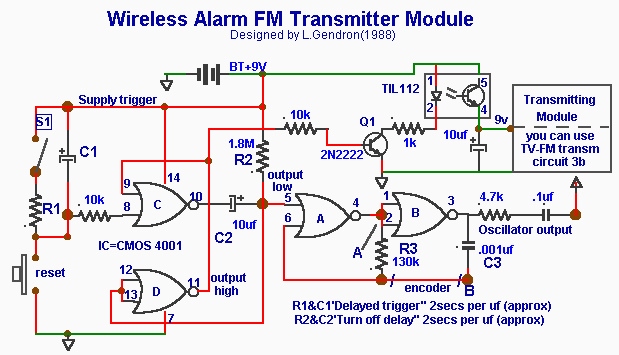
AM Transmitter
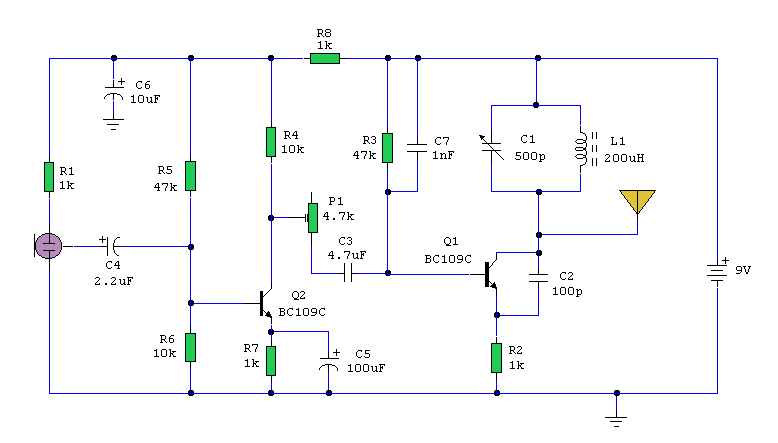
AM Transmitter. It is illegal to operate a radio transmitter without a license in most countries. This circuit is deliberately limited in power output.
An AM transmitter is designed to modulate an audio signal onto a carrier wave for the purpose of broadcasting. The operation of the transmitter involves several key components: an audio input stage, a modulator, an oscillator, and an output stage.
The audio input stage typically consists of a microphone or audio source connected to an amplifier that boosts the audio signal to a suitable level for modulation. The modulator combines the audio signal with a high-frequency carrier wave generated by the oscillator. This carrier wave is usually generated using a crystal oscillator or a LC circuit, which provides stability and precision in frequency.
The modulation process involves varying the amplitude of the carrier wave in accordance with the audio signal. This is achieved using a transistor or a dedicated modulation IC, which allows the audio signal to control the amplitude of the carrier wave effectively.
The output stage is responsible for driving the antenna. In this circuit, the power output is intentionally limited to comply with legal restrictions and to reduce interference with other communications. This is often accomplished through the use of resistors or limiting circuits that prevent excessive power from being transmitted.
The antenna itself is typically a simple wire or dipole design, tuned to the frequency of the transmitter to ensure optimal radiation of the signal. Proper grounding and matching of the antenna to the transmitter circuit are essential for efficient transmission.
It is crucial to emphasize that operating an AM transmitter without the appropriate licensing can result in legal penalties. Therefore, it is recommended that individuals interested in building or operating such transmitters familiarize themselves with local regulations and obtain the necessary permits.AM Transmitter. It is illegal to operate a radio transmitter without a license in most countries. This ircuit is deliberately limited in power output but. 🔗 External reference
An AM transmitter is designed to modulate an audio signal onto a carrier wave for the purpose of broadcasting. The operation of the transmitter involves several key components: an audio input stage, a modulator, an oscillator, and an output stage.
The audio input stage typically consists of a microphone or audio source connected to an amplifier that boosts the audio signal to a suitable level for modulation. The modulator combines the audio signal with a high-frequency carrier wave generated by the oscillator. This carrier wave is usually generated using a crystal oscillator or a LC circuit, which provides stability and precision in frequency.
The modulation process involves varying the amplitude of the carrier wave in accordance with the audio signal. This is achieved using a transistor or a dedicated modulation IC, which allows the audio signal to control the amplitude of the carrier wave effectively.
The output stage is responsible for driving the antenna. In this circuit, the power output is intentionally limited to comply with legal restrictions and to reduce interference with other communications. This is often accomplished through the use of resistors or limiting circuits that prevent excessive power from being transmitted.
The antenna itself is typically a simple wire or dipole design, tuned to the frequency of the transmitter to ensure optimal radiation of the signal. Proper grounding and matching of the antenna to the transmitter circuit are essential for efficient transmission.
It is crucial to emphasize that operating an AM transmitter without the appropriate licensing can result in legal penalties. Therefore, it is recommended that individuals interested in building or operating such transmitters familiarize themselves with local regulations and obtain the necessary permits.AM Transmitter. It is illegal to operate a radio transmitter without a license in most countries. This ircuit is deliberately limited in power output but. 🔗 External reference
